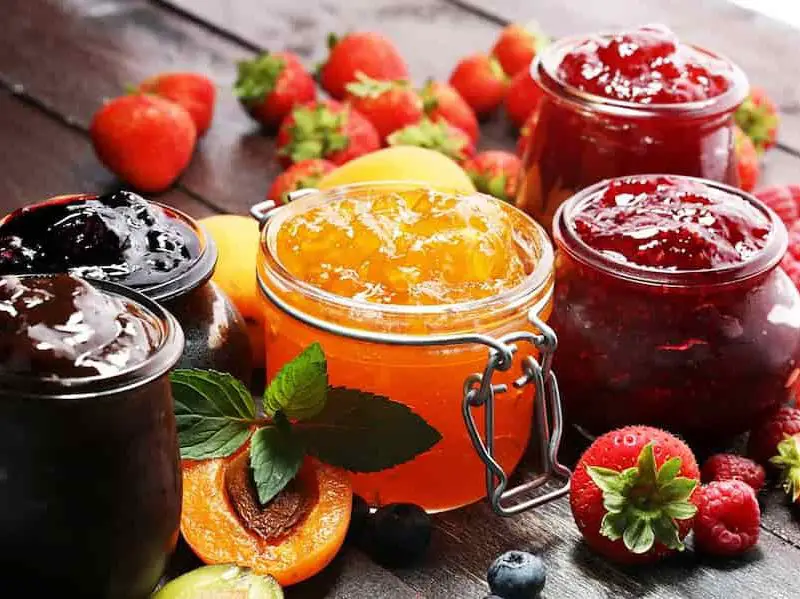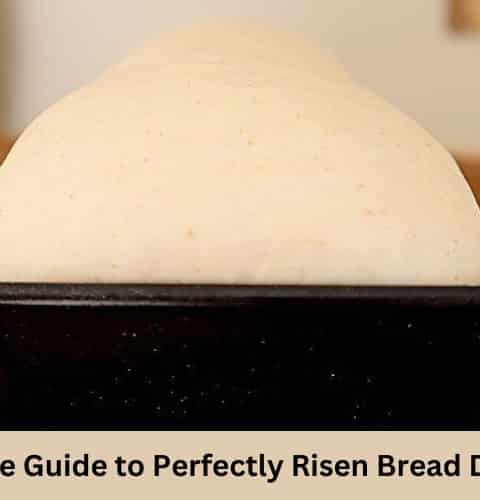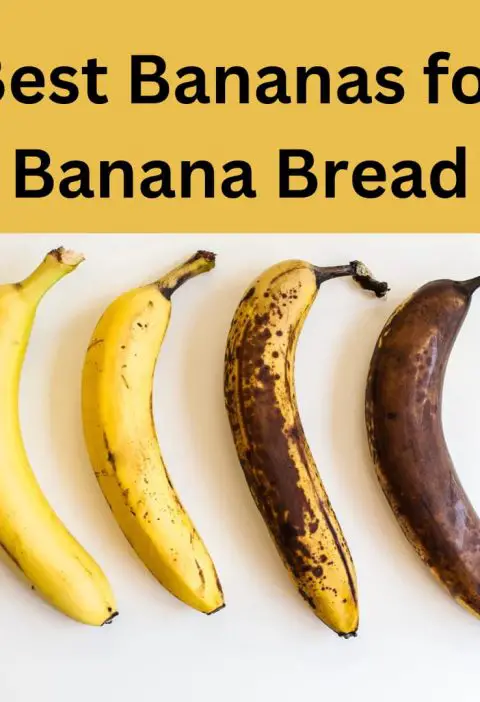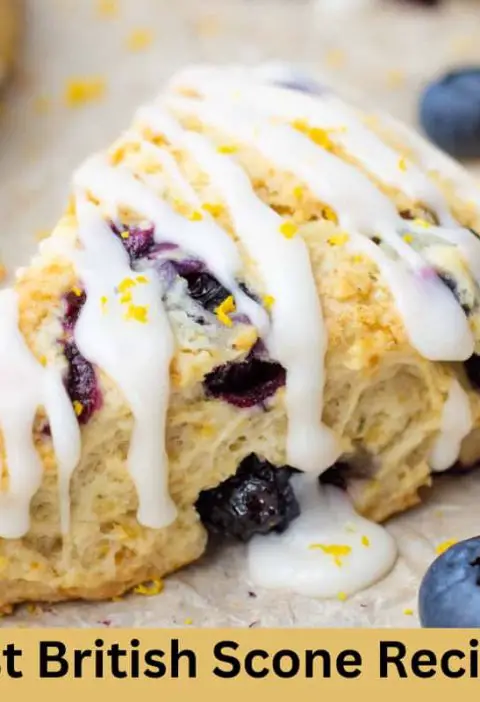In this article, I will guide you through the basics of jam making, from choosing the right fruit to storing your homemade jam. Whether you want to make jam for yourself, or your family, or as a gift, you will find this article helpful and informative.
Let’s get started!
What is Jam and How is it Made?
Jam, a delightful preserve, is crafted by simmering fruit with sugar and occasionally pectin, a substance aiding in its setting. Both fresh and frozen fruits serve as excellent bases, and the addition of spices, herbs, or citrus zest can enhance its flavor. While commonly spread on bread or toast, jam also makes a scrumptious filling for cakes, pastries, and pies.
The basic process of making jam is as follows:
- Prepare the fruit by washing, peeling, pitting, and chopping it as needed.
- Crush the fruit with a potato masher or a wooden spoon to release its juices.
- Add sugar and lemon juice (and pectin if using) to the fruit and bring the mixture to a boil in a large pot.
- Cook the jam until it reaches the gel stage, which means it has thickened enough to hold its shape when cooled.
- Ladle the hot jam into sterilized jars and seal them with lids and bands.
- Process the jars in a boiling water bath for 10 minutes to make them shelf-stable, or store them in the refrigerator for up to 3 weeks.
How to Choose the Right Fruit for Jam
The quality of your jam depends largely on the quality of your fruit. You want to use ripe, sweet, and flavorful fruit that is in season. Avoid bruised, moldy, or overripe fruit, as they can affect the taste and texture of your jam. You can also mix different types of fruit to create your own unique combinations.
Some fruits are naturally high in pectin, such as apples, citrus, cranberries, and plums. These fruits will be set easily without adding extra pectin. Other fruits are low in pectin, such as strawberries, cherries, raspberries, and peaches. These fruits will need some lemon juice to activate their natural pectin, or some commercial pectin to help them gel.
You can use fresh or frozen fruit for making jam. If using frozen fruit, thaw it completely before cooking. You can also use canned fruit, but make sure to drain it well and reduce the amount of sugar in the recipe.
What Jam-making equipment do I need?
Making a jam at home requires certain essential tools to ensure a safe and efficient process. Let’s break down the equipment you’ll need:
1. Cooking Vessel:
- Large, heavy-bottomed pot or a maslin pan: This will be used to cook the fruit and sugar mixture. Ensure it’s spacious, holding at least twice the volume of your ingredients to accommodate the foamy bubbling during boiling.
- Note: A maslin pan is designed especially for jam-making, featuring a spout and handle for simplified pouring.
2. Stirring Tools:
- Wooden spoon or spatula: Essential for stirring the mixture and avoiding any sticking or burning. Opt for wood or silicone over metal to avoid heat conduction and potential scratches.
3. Setting Test Tools:
- Thermometer or cold plate:
- Thermometer: Measures the jam’s temperature, which should ideally be 220°F (104°C) at sea level.
- Cold plate: Helps in testing jam consistency. A dollop of jam, when pushed with a finger, should wrinkle if set.
4. Transferring Tools:
- Funnel and ladle:
- Funnel: A wide-necked funnel minimizes spills when transferring jam to jars.
- Ladle: Ensures an even scoop of jam for jar-filling.
5. Storage Containers:
- Jars and lids: Clean, sterilized glass jars are ideal for storing. Sterilize by boiling, oven baking, or using a dishwasher. Ensure lids fit securely.
6. Handling Tools:
- Jar lifter or tongs: Vital for managing hot jars safely. A jar lifter provides a secure grip, while tongs can be used for handling both jars and lids.
7. Labeling:
- Labels and markers: Label your jam jars with details like the jam type and preparation date, assisting in easy identification and shelf-life tracking. Ensure labels and markers adhere well to glass surfaces.
How Much Sugar Do You Need for Jam?
Sugar is an essential ingredient for making jam. It not only sweetens the fruit but also helps preserve it by inhibiting the growth of bacteria and mold. Sugar also helps the jam set by binding with the pectin and forming a gel.
The amount of sugar you need for jam depends on several factors:
- The type of fruit you are using: Some fruits are sweeter than others and need less sugar.
- The type of pectin you are using: Some pectins require more sugar than others to work properly.
- Your personal preference: Some people like their jam more tart than others.
As a general rule, you can use about 3/4 cup of sugar for every cup of fruit. However, you can adjust this ratio according to your taste and the instructions on your pectin package. You can also use other sweeteners instead of sugar, such as honey or maple syrup. However, these sweeteners may affect the flavor and color of your jam.
How to Test if Your Jam is Ready
One of the most important steps in making a jam is knowing when it is done. If you cook your jam too little, it will be runny and watery. If you cook it too much, it will be hard and sticky. You want your jam to be thick enough to hold its shape when cooled, but still spreadable and soft.
There are several ways to test if your jam is ready:
- The spoon test: Dip a cold metal spoon into the hot jam and lift it out. Let the jam drip off the spoon back into the pot. If the last drop hangs from the edge of the spoon without falling off, your jam is ready.
- The plate test: Put a small plate in the freezer for 10 minutes. Take it out and drop a teaspoon of hot jam on it. Put it back in the freezer for 2 minutes. Take it out again and push your finger through the jam. If it wrinkles on the surface and doesn’t flow back together, your jam is ready.
- The thermometer test: Use a candy thermometer to measure the temperature of your jam. It should reach 220°F (104°C) at sea level. For every 1,000 feet (305 meters) above sea level, subtract 2°F (1°C) from this temperature.
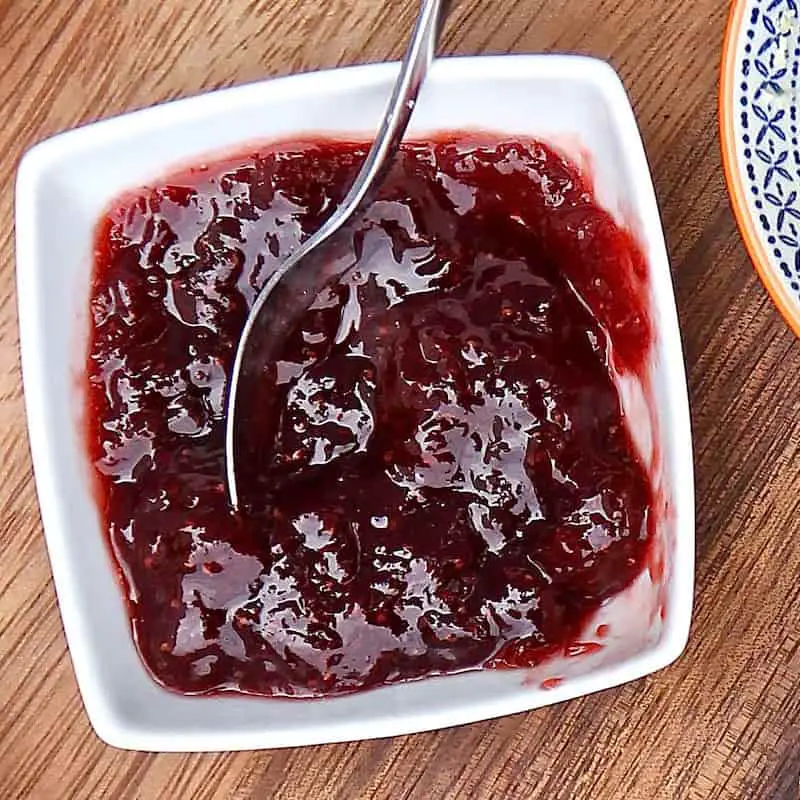
How to Sterilize Your Jars and Lids
Before you fill your jars with jam, you need to sterilize them to prevent any bacteria or mold from spoiling your jam. There are several ways to sterilize your jars and lids, such as:
- Boil them in a large pot of water for 10 minutes.
- Washing them in a dishwasher on the hottest cycle.
- Baking them in an oven at 120°C (250°F) for 15 minutes.
Make sure to sterilize your jars and lids just before you use them, and keep them warm until you fill them with jam. You can also use a jar lifter or tongs to handle the hot jars and lids.
How to Store Your Homemade Jam
Once your jam is ready, you need to store it properly to keep it fresh and safe. There are two main ways to store your homemade jam:
- Refrigerate it: This is the easiest and quickest way to store your jam. Simply ladle the hot jam into clean jars and seal them with lids and bands. Let them cool completely and then store them in the refrigerator for up to 3 weeks. You can also freeze your jam for up to a year, but make sure to leave some headspace in the jars to allow for expansion.
- Can it: This is the best way to store your jam if you want to keep it at room temperature for up to a year. You will need to process your jam in a boiling water bath for 10 minutes to kill any harmful bacteria and create a vacuum seal. You will also need to use jars, lids, and bands that are specifically designed for canning.

How to Fix Common Jam Problems
Sometimes, your jam may not turn out as expected. Here are some common jam problems and how to fix them:
- Runny jam: If your jam is too thin and watery, it may not have reached the setting point or it may have too much liquid. You can try cooking it again until it thickens or adding more pectin, sugar, or lemon juice. You can also use runny jam as a syrup or sauce for desserts.
- Hard jam: If your jam is too hard and stiff, it may have been overcooked or it may have too much sugar or pectin. You can try reheating it with some water or fruit juice until it softens, or using hard jam as a candy or spread.
- Crystallized jam: If your jam has sugar crystals on the surface or in the jar, it may have been cooked too long or it may have undissolved sugar. You can try dissolving the crystals by heating the jam with some water or lemon juice, or scraping off the crystals and using crystallized jam as a topping or filling.
- Moldy jam: If your jam has mold on the surface or in the jar, it may have been contaminated by bacteria or air. You can try removing the mold and boiling the jam again, but it is safer to discard moldy jam and sterilize your jars and lids properly.
How to Adjust Your Recipe for Different Altitudes
If you live in a high-altitude area, you may need to adjust your recipe for making jam. This is because the boiling point of water decreases as the altitude increases, which affects the cooking time and temperature of your jam. To make jam at high altitudes, you need to:
- Increase the cooking time by 1 minute for every 300 meters (1,000 feet) above sea level.
- Increase the amount of lemon juice or acid by 1 teaspoon for every 4 cups of fruit.
- Decrease the amount of sugar by 1/4 cup for every 4 cups of fruit.
You can also use a candy thermometer to measure the temperature of your jam instead of relying on the spoon or plate test. The setting point of jam is usually 8°C (15°F) above the boiling point of water at your altitude.
Popular Jams Recipes:
FAQs
What is the difference between jam, jelly, and preserves?
Jam is made by cooking fruit with sugar and sometimes pectin until it thickens. Jelly is made by cooking fruit juice with sugar and pectin until it sets. Preserves are made by cooking whole or large pieces of fruit with sugar until they are soft.
Can I use less sugar or no sugar in my jam?
Yes, you can use less sugar or no sugar in your jam, but you will need to use a special type of pectin that is designed for low-sugar or no-sugar recipes. You can also use natural sweeteners like honey or maple syrup instead of sugar.
Can I use any type of pot for making jam?
No, you should use a large, heavy-bottomed pot that can hold at least twice the volume of your fruit mixture. This will prevent your jam from boiling over or burning on the bottom.
How long does homemade jam last?
Homemade jam can last up to 3 weeks in the refrigerator, up to a year in the freezer, or up to a year at room temperature if canned properly.
How can I make my jam more flavorful? A: You can add spices, herbs, or citrus zest to your jam to enhance its flavor. Some common additions are cinnamon, nutmeg, ginger, vanilla, mint, basil, lemon, orange, or lime. You can also mix different types of fruit for more variety.
Final Words
Making jam is a fun and rewarding way to preserve the bounty of the season. You can enjoy your homemade jam on toast, muffins, pancakes, or yogurt, or give it as a gift to your friends and family. With some basic equipment and ingredients, you can make delicious jams in no time.
I hope you found this article helpful and informative. If you have any questions or comments, please feel free to leave them below. Happy jamming!
Sources:

